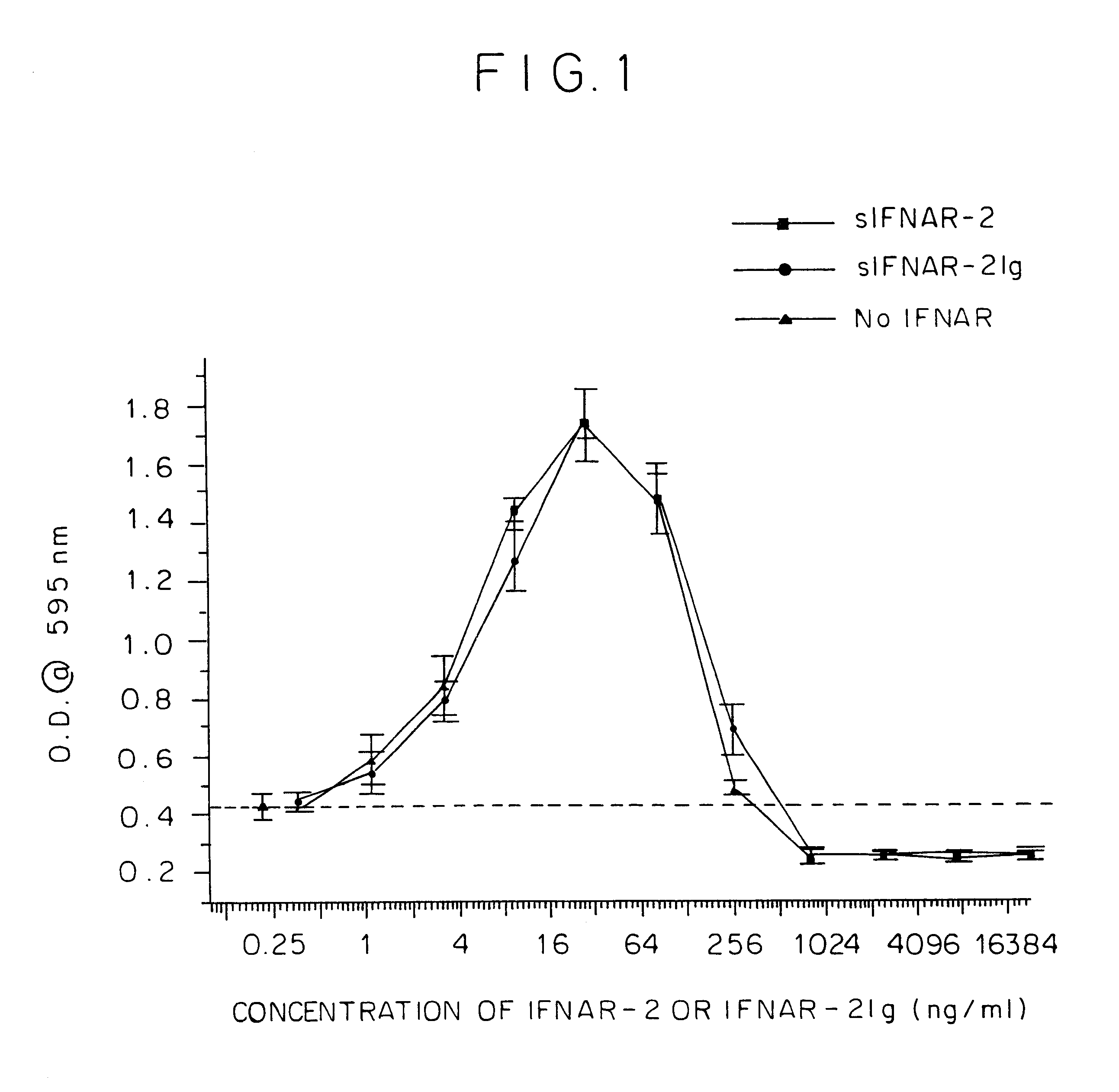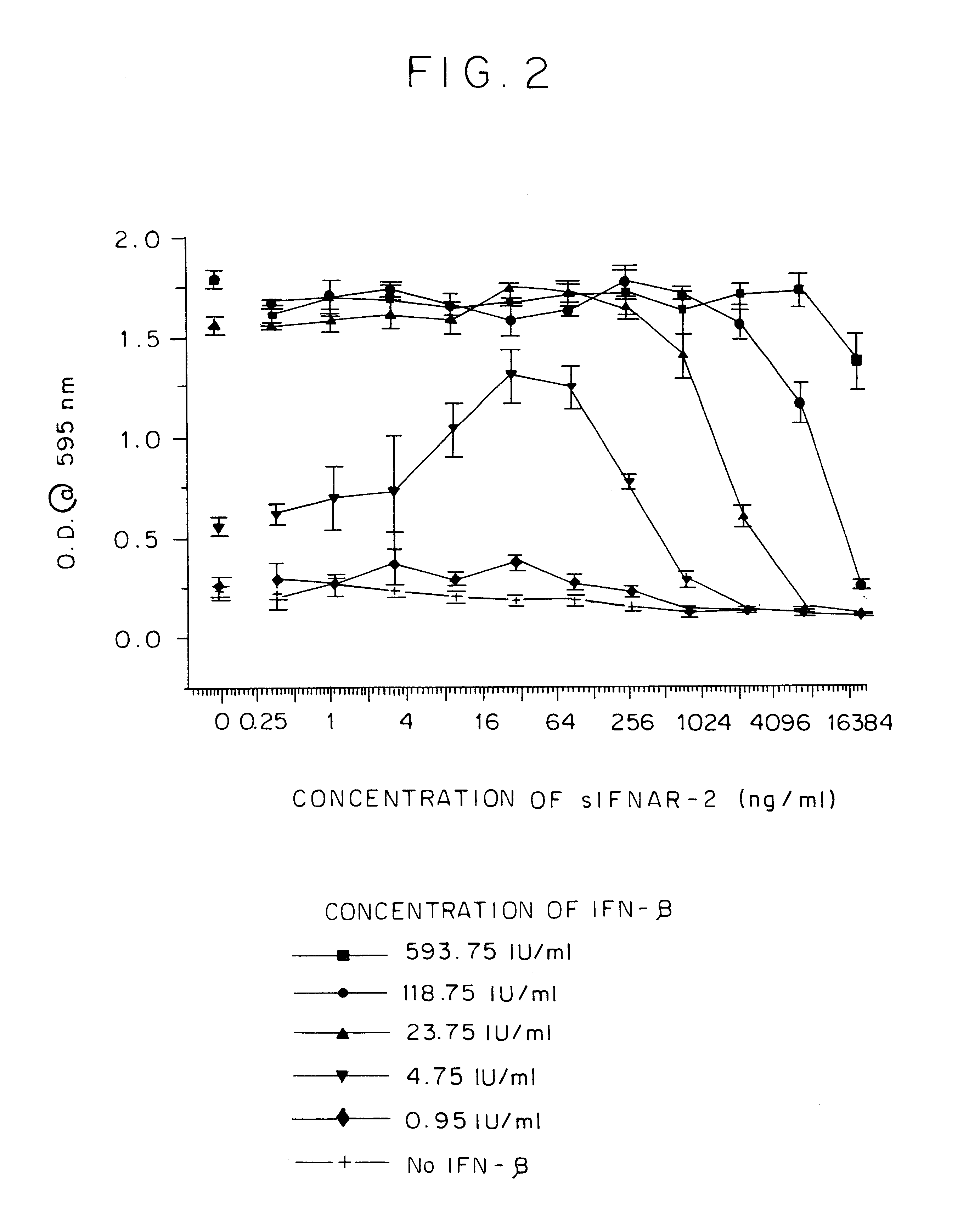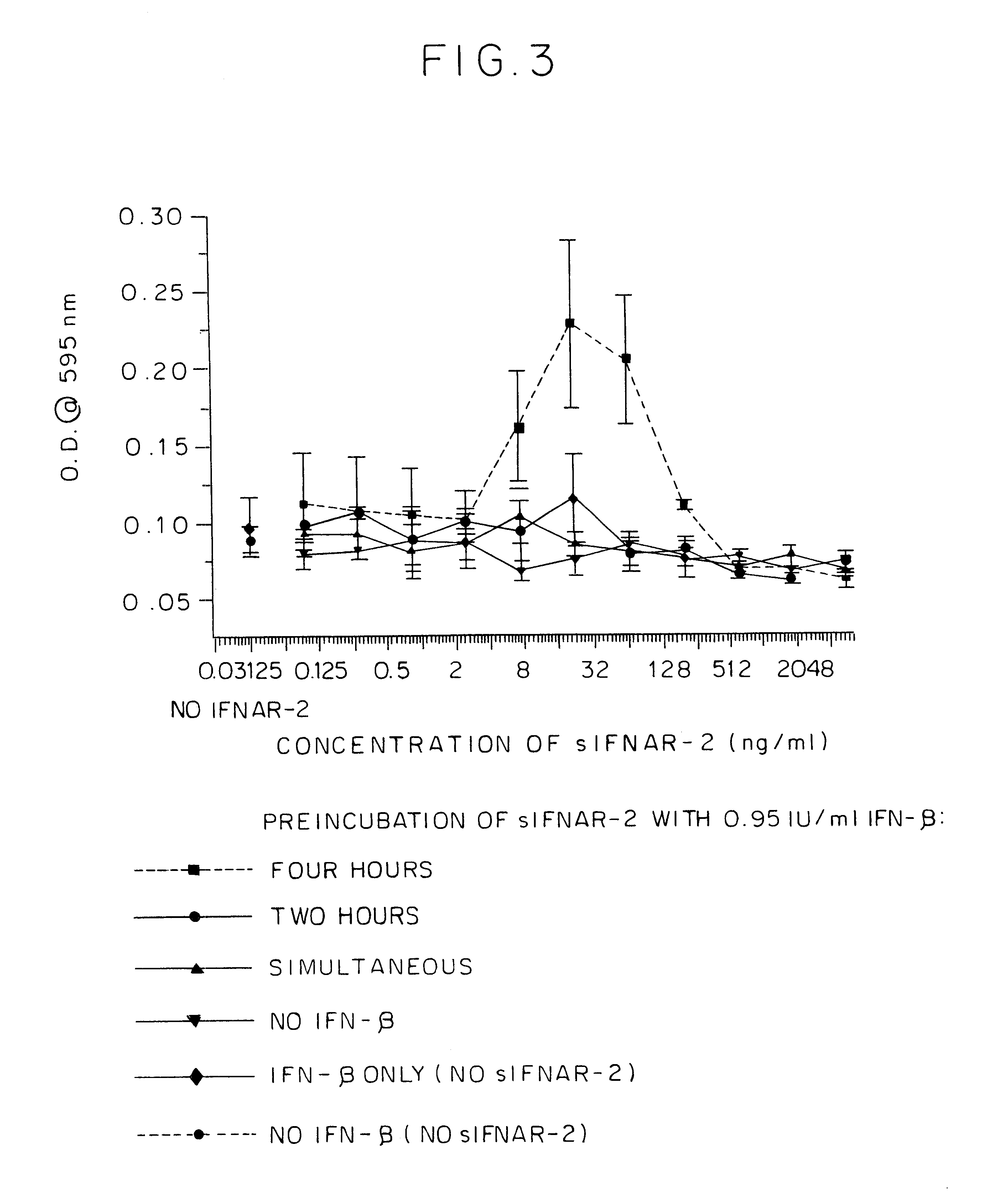IFNAR2/IFN complex
a technology which is applied in the field of ifnar2 and complex, can solve the problems of localized irritation, analog will be ineffective, and localized irritation
- Summary
- Abstract
- Description
- Claims
- Application Information
AI Technical Summary
Problems solved by technology
Method used
Image
Examples
example 1
To assess the anti-viral activity of the human IFNAR2 / IFN.beta. complex and human IFNAR2Ig-IFN.beta. complex, a fixed concentration of IFN.beta. (4.75 IU / ml) was preincubated for 3 hours at 37.degree. C. with human sIFNAR2 (recombinant p40) or human IFNAR2Ig at varying concentrations (0.25-30000 ng / ml) and then tested in a WISH-VSV cytopathicity assay. In the absence of IFN no anti-viral protection was detected (data not shown).
Anti-viral activity of Type I interferons (used at predetermined EC.sub.50 concentrations) in the presence of approximately 30 ng / ml sIFNAR2 reveals optimal agonist activity with IFN.beta., but not alone. Anti-viral activity was measured by MTT conversion 48 h after VSV challenge.
When IFN was present at an expected ED.sub.50 concentration, protection was observed (see FIG. 1; absorbance equal to 0.45, no protection absorbance equals .about.0.0, complete protection absorbance equals .about.1.8)). When IFNAR2 or IFNAR2Ig was titrated in at varying concentration...
example 2
The effect of changing the IFN.beta. concentration on sIFNAR2 / IFN complex activity was examined at different concentrations of IFN.beta. in addition to the ED.sub.50. As can be seen in FIG. 2, at 4.75 IU / ml IFN.beta., IFNAR2 preincubation for 1 hour enhanced the activity of IFN.beta. by .about.2.times. at a concentration maximum of .about.32 ng / ml. At each of the higher concentrations of IFN.beta. it was not possible to detect enhancement of the IFN.beta. anti-viral activity as the activity was already maximal. These results also support that an IFNAR2 / IFN.beta. complex has enhanced IFN activity.
example 3
The kinetics of the IFNAR2 / IFN.beta. complex formation was examined by assessing the anti-viral activity of a sub-effective concentration of IFN.beta. (0.95 IU / ml) at various times of preincubation with different concentrations of IFNAR2. As seen in FIG. 3, 4 hours of preincubation were necessary to give enhanced anti-viral activity of IFN.beta. at this sub-effective dose. Thus, at levels of IFN.beta. which are inactive by themselves, addition of IFNAR2 to generate a complex resulted in significant IFN anti-viral activity. This experiment provides additional support for the IFNAR2 / IFN.beta. complex enhanced IFN activity.
PUM
| Property | Measurement | Unit |
|---|---|---|
| Fraction | aaaaa | aaaaa |
| Mass | aaaaa | aaaaa |
| Mass | aaaaa | aaaaa |
Abstract
Description
Claims
Application Information
 Login to View More
Login to View More - R&D
- Intellectual Property
- Life Sciences
- Materials
- Tech Scout
- Unparalleled Data Quality
- Higher Quality Content
- 60% Fewer Hallucinations
Browse by: Latest US Patents, China's latest patents, Technical Efficacy Thesaurus, Application Domain, Technology Topic, Popular Technical Reports.
© 2025 PatSnap. All rights reserved.Legal|Privacy policy|Modern Slavery Act Transparency Statement|Sitemap|About US| Contact US: help@patsnap.com



